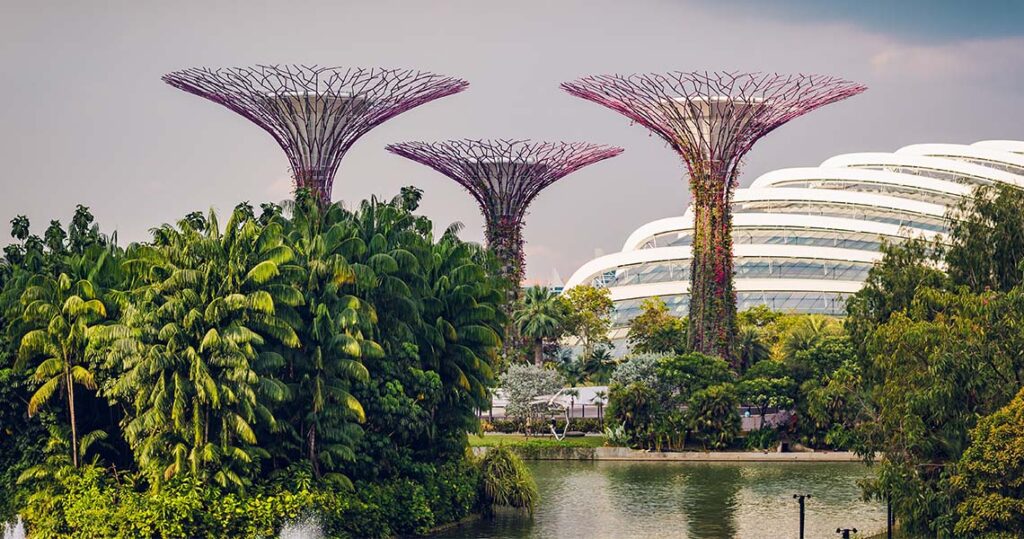
Until now, we have talked about Biophilic Design mainly in reference to residential buildings and workspaces. Now we would like to widen our view and investigate how Biophilic Design can improve other environments as well.
This discipline can be applied to any building type, architectural intervention and urban planning. We have seen through direct and indirect design experiences that it is particularly effective and useful in educational environments (schools, universities, libraries, etc.), as well as in healthcare (hospitals, clinics and even simple family doctor's waiting rooms).
After the recent pandemic and the necessity to completely rethink our office spaces, there is an increasing trend towards using a biophilic approach to redesign not only traditional office spaces but also remote work environments, 'third places' such as urban spaces, parks, squares, hotels, coworking spaces, multidisciplinary hubs, and more.
An interesting area for biophilic design strategies, concerns our cities.
Premise:
Today, more than half of the world's population lives in urban agglomerations, often in situations of great hardship.
Global urbanisation is an unstoppable trend; there are staggering estimates of the numbers of people who will populate gigantic megacities in the world in the near future. The people who move to the cities, in most cases, are driven by shortages of all kinds in their homelands and by the desire for a better living condition with more opportunities to find respectable work. We know that these hopes are often not only not fulfilled, but the same people sometimes find themselves caught up in exploitative or even criminal mechanisms.
Already in 1973, the Genoese poet and writer Eugenio Montale described in his “32 variazioni” with extreme lucidity the discomforts that so many human beings experience living in big cities: 'The unnatural metropolitan concentrations do not fill any void, rather they accentuate it. The man who lives in cement cages, in crowded hives, in asphyxiated barracks is a man condemned to solitude."
Fortunately, in Italy we do not (yet) have this type of urban agglomeration; on the contrary, I would dare say that in our country there are many fascinating cities full of artistic heritage that attract many tourists from all over the world every year. However, we also have larger cities, such as Rome, Milan, Naples, Turin, etc., which can be places where healthy living is not always easy.
In the first decade of the 2000s, American sustainable urban planning expert Timothy Beatley had the idea of pushing the principles of Biophilic Design, which until then had been conceived for architectural and interior design, to the
In 2008, he published a chapter entitled 'Toward Biophilic Cities: Strategies for Integrating Nature into Urban Design' in the book 'Biophilic Design' edited by Stephen Kellert et al.; the latter is still a seminal text today which initiated the discipline of Biophilic Design at the time.
In 2010, a book by Beatley entitled 'Biophilic Cities: Integrating Nature into Urban Design and Planning' came out, which inaugurated the ‘Biophilic City Project’ at the University of Virginia with the aim of applying the ideas, principles and practices of the still emerging Biophilic Design movement to cities and metropolitan areas.
A biophilic city is like “a green city, a city with abundant nature and natural systems that are visible and accessible to urbanites. It is certainly about physical conditions and urban design—parks, green features, urban wildlife, walkable environments—but it is also about the spirit of a place, its emotional commitment and concern about nature and other forms of life, its interest in and curiosity about nature, which can be expressed in the budget priorities of a local government as well as in the lifestyles and life patterns of its citizens.” (Beatley, 2011).
Biophilic cities contain multiple natural elements, such as trees, vegetation, animals, parks, gardens, and give everyone the opportunity to connect and have direct experiences with Nature. The Biophilic Cities Network was founded in 2013 and represents a global design and planning movement that has since been joined by numerous cities around the world that recognise man's innate affiliation with Nature (=biophilia) and the need to place contact with Nature at the centre of design and planning (Beatley, 2020) to create healthy and positive environments.
In summary, biophilic cities represent a true evolution of traditional urbanism, focusing on the integration of natural elements within urban areas, especially the most degraded ones. This innovative approach aims to create urban environments that promote the physical and mental wellbeing of inhabitants, support the biodiversity of plants and animals, reduce not only air pollution, and promote a sustainable and healthier lifestyle.
Biophilic cities not only respond to the environmental and social challenges of our time, but also promote a more balanced and harmonious future between Man and Nature.
We hope that more and more cities in the world will become Biophilic Cities!
- - -
Bettina Bolten, Biophilic design consultant




















